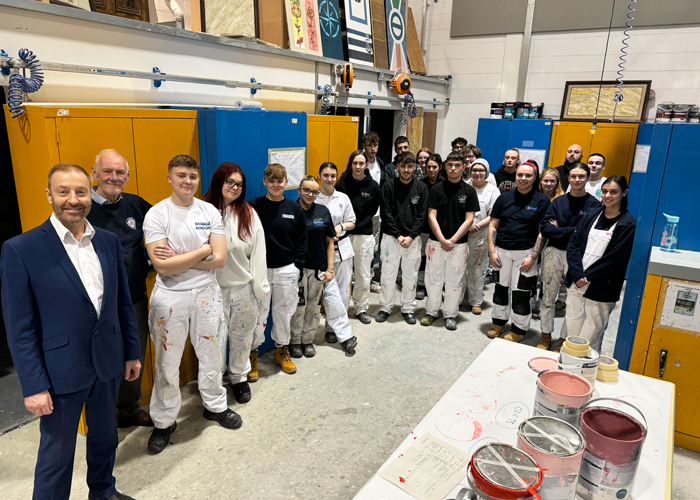If you’re new to the world of riveting or looking to enhance your knowledge, you’ve come to the right place. Rivets are essential fasteners used in various industries, including automotive, aerospace, construction, and manufacturing. In this comprehensive guide, we’ll delve into the basics of industrial rivets, explore different types of rivets, discuss their applications, and provide insights into riveting techniques. So, let’s dive in and discover everything you need to know about industrial rivets!
What Are Industrial Rivets?
Rivets are mechanical fasteners used to permanently join two or more materials together. They consist of a cylindrical shaft with a head on one end and a tail on the other. When installed, the tail end is deformed to secure the joint, creating a strong and durable connection. Industrial fasteners offer excellent resistance to vibration, shear forces, and tension, making them ideal for applications where reliability and strength are paramount.
Types of Industrial Rivets:
When it comes to industrial rivets, there is a wide range of options available, each designed to suit specific applications. Let’s take a closer look at some commonly used types of rivets:
Solid Rivets
Solid rivets are the oldest and most traditional type of rivets. They are typically made from durable materials such as steel, aluminium, and copper. Solid rivets require specialized tools like a rivet hammer or hydraulic press for installation. During the installation process, the tail end of the rivet is deformed by creating a shop head, which secures the joint. Solid rivets are known for their exceptional strength and are commonly used in heavy-duty applications where reliability and structural integrity are paramount. Industries such as shipbuilding, aerospace, and bridge construction rely on solid rivets for their ability to withstand high loads and resist shear forces.
Blind Rivets (Pop Rivets)
Blind rivets, often referred to as pop rivets, are versatile fasteners that are particularly useful in situations where access to the rear side of the joint is limited. These rivets consist of a hollow rivet body and a mandrel that passes through its centre. During installation, a rivet gun or tool is used to pull the mandrel, which causes the tail end of the rivet to expand and create a bulbed tail on the blind side of the joint. This bulbed tail provides a secure and tight connection. Blind rivets are popular due to their ease of installation and are available in various materials and sizes to accommodate different applications. They find extensive use in industries such as automotive manufacturing, sheet metal fabrication, and consumer electronics assembly.
Tubular Rivets
Tubular rivets, as the name suggests, have a hollow structure similar to blind rivets. However, unlike blind rivets, tubular rivets do not feature a mandrel. These rivets are often used in applications where a water- or airtight seal is required. Tubular rivets are commonly found in the production of air conditioning units, electrical appliances, leather goods, and even in the manufacturing of musical instruments. They provide a reliable connection while ensuring a sealed environment, making them ideal for applications that involve fluid or gas containment.
Each type of rivet serves a specific purpose, and selecting the right one depends on factors such as the materials being joined, the required strength of the connection, and the specific environmental conditions the joint will be subjected to. By understanding the characteristics and applications of different rivet types, you can make informed decisions when it comes to choosing the most suitable rivet for your project.
Applications of Industrial Rivets
Industrial rivets have widespread applications across various industries due to their reliability and strength. Let’s explore some of the common industries where rivets play a vital role:
Automotive Industry
In the automotive industry, rivets are extensively used in the manufacturing process. They are employed to join panels, brackets, and structural components of vehicles. Rivets contribute significantly to the overall strength and rigidity of the automobile, ensuring safety and reliability on the road. By securely connecting different parts, rivets help maintain the integrity of the vehicle’s structure, making them indispensable in automotive assembly lines.
Aerospace Industry
The aerospace industry demands lightweight yet durable components for aircraft construction. Rivets are an integral part of assembling aircraft frames, wings, and other critical structures. These fasteners provide the necessary strength while minimizing weight. Rivets play a crucial role in maintaining the structural integrity and safety of aircraft, enabling them to withstand extreme conditions, including high speeds, vibrations, and varying atmospheric pressures.
Construction Industry
In the construction industry, rivets are widely employed for joining steel beams, trusses, and other structural elements. Large-scale projects, such as bridges, skyscrapers, and industrial buildings, heavily rely on the use of rivets to ensure the stability and strength of the structures. Rivets offer a secure connection that can withstand the forces exerted on the construction, including tension, compression, and shear. By providing robust joint integrity, rivets contribute to the overall structural integrity and longevity of the built environment.
Manufacturing Industry
Rivets find applications in various manufacturing sectors. They are used to fasten components in appliances, machinery, furniture, and many other products. Whether it’s securing metal sheets in refrigerators or joining parts in heavy machinery, rivets provide a dependable solution. They offer durability and resistance to vibrations, ensuring that the assembled products can withstand operational demands.
These are just a few examples of the wide-ranging applications of industrial rivets. From automobiles to aircraft, construction projects to manufacturing processes, rivets play a crucial role in joining materials and creating strong connections. The versatility and reliability of rivets make them an essential component in industries where robust and long-lasting joints are required.
Riveting Techniques
Now that we have covered the types of rivets and their applications, let’s delve into some common techniques used for riveting:
Solid Rivet Installation
Installing solid rivets involves several steps to create a strong and permanent joint. First, a hole is drilled through the materials that need to be joined. The diameter of the hole should match the size of the solid rivet. Then, the solid rivet is inserted into the hole, with the head resting on the surface of the material. To deform the tail end of the rivet, a rivet hammer or a hydraulic press is used. The force applied to the tail end creates what is known as a shop head or a buck-tail, which secures the joint firmly. The shop head ensures that the rivet remains in place, preventing any unintended disconnection. Solid rivets are commonly used in applications where strength and permanence are crucial, such as in heavy machinery, structural steelwork, and boiler manufacturing.
Blind Rivet Installation
Blind rivets, also known as pop rivets, offer the advantage of being installed from one side of the joint when access to the rear side is limited. The installation process begins by drilling a hole through the materials being joined. Then, the blind rivet is inserted into the hole. The blind rivet consists of a hollow rivet body with a mandrel passing through its centre. Using a rivet gun, the mandrel is pulled, creating tension within the rivet. This tension causes the tail end of the rivet to expand, forming a bulbed tail on the blind side of the joint. The bulbed tail creates a secure and tight connection, holding the materials together. Finally, the excess mandrel is discarded, leaving a neat and finished appearance. Blind rivets are popular due to their ease of installation and are commonly used in applications where quick assembly and accessibility are important, such as in sheet metal fabrication, automotive assembly, and electrical enclosures.
Conclusion
Whether you are a novice exploring the world of riveting or an experienced professional seeking to enhance your knowledge, this guide serves as a valuable resource for your riveting endeavors. By applying the insights gained here, you can confidently navigate the world of industrial rivets and unlock a plethora of possibilities in construction, manufacturing, automotive, and beyond.
As you embark on your riveting projects, always remember to carefully assess the requirements of each application, considering factors such as material compatibility, joint strength, and environmental conditions. By employing best practices and techniques, you can ensure the integrity, durability, and reliability of your riveted connections.
Continue to explore and stay informed about advancements in riveting technology, as this field continually evolves to meet the demands of modern industries. With a solid foundation in industrial rivets and their applications, you are well-equipped to excel in your endeavors and contribute to the success of your projects.











